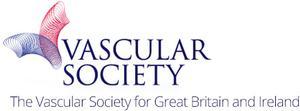BOASt - Diagnosis & Management of Arterial Injuries Associated With Extremity Fractures and Dislocations



Date Published: December 2020
Last Updated: April 2021
Background and justification
Rapid, accurate diagnosis of arterial injuries to the extremities is crucial for optimum outcome with immediate referral to, and joint management with, a surgeon capable of performing vascular repair.
Inclusions
Patients of all ages with vascular injuries to the extremity associated with musculoskeletal trauma.
Standards for Practice
- All hospitals and networks that are responsible for the management of injured patients must have clear emergency referral and transfer protocols that should include a single point of contact.
- Centres providing definitive care must have an agreed protocol and pathway standardising the management of these complex injuries.
- This protocol should include combined review and decision making in person by Consultant surgeons skilled in vascular repair and skeletal trauma on reception of the patient.
- Haemorrhage should be controlled immediately by direct pressure or tourniquet. Blind clamping should not be undertaken.
- A pulseless, deformed limb should be re-aligned, splinted and the vascular examination repeated and documented at the time of diagnosis and prior to transfer.
- Neurological examination must be documented as a timed entry in all patients with extremity trauma; associated nerve injury should be presumed until disproven.
- Any patient undergoing CT scan following major trauma should have a head to toe scanogram.
- CT angiography of the extremity should occur immediately following the scanogram, without requirement for patient repositioning.
- The ischaemic limb should be revascularised within four hours from injury.
- Where rapid definitive restoration of arterial flow cannot be achieved, arterial shunts should be used to restore flow (eg while skeletal stabilisation is placed).
- Definitive repair or direct interposition grafts are preferred to bypass grafts.
- Where cognition allows, patients must be made aware of the possibility of amputation. Any decision to perform early amputation must be made by two consultants and clearly documented.
- Fasciotomies should always be considered. They should either be performed or the decision not to perform documented with the name of the senior decision maker. There is a low threshold for fasciotomy in these cases.
- Post-operative care should be delivered in an appropriate area with nursing and medical staff competent in the assessment of the critically injured limb.
Evidence base
Studies with level-1 evidence are lacking. Predominantly retrospective series, with some good prospective studies, meta-analyses, reviews and expert opinion
* On 30th April 2021, the BOAST was updated to remove bullet point 11 that had appeared in the earlier version in error. We have preserved the numbering on all other bullet points for consistency with the previous version
